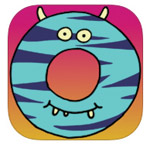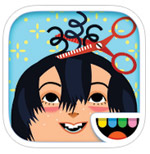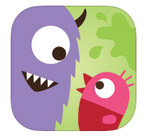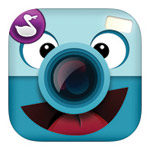
While there continues to be much debate about whether or not tablets have positive potential as a tool for learning in the EYFS, there is no getting away from the fact that they are increasingly being adopted by early years settings and are here to stay.
But the move away from desktop computers to mobile devices – and particularly iPads – comes with its own challenges.
Most children now begin the EYFS with the knowledge of how to access apps, and many understand other aspects of a smartphone. Nurseries find that they demonstrate an enthusiasm and curiosity for mobile technology that is powerful when it is harnessed appropriately. However, finding the best apps is not easy.
At supplier Yellow Door, product development manager Cathy Griffen says its research highlights how difficult it can be for nurseries to identify the right ‘educational’ apps available on the i-store. ‘They are trying to find high-quality, age-appropriate resources among the vast number of free apps that are available,’ she says.
Apps that give children an innovative way to engage with a particular task – and with each other – are currently in demand. Ideally these should be open-ended, connect with the physical environment and promote discussion.
A good example of this is Little Digits from Cowly Owl (see over the page). With its touch recognition to display and ‘speak’ how many fingers are touching the screen at any one time, it can claim to be innovative in the way it helps children learn to count and perform simple calculations. Practitioners testify to it being most effective when used in its simplest form, with children using their fingers to touch the screen and experiment with numbers.
The in-built features of cameras and microphones are a large part of what make tablets powerful devices and it is these that children have often experienced and mastered at a very early age. There are a number of apps that fully utilise these features and enable children to record their voices and their work themselves. Practitioners are sometimes surprised when they hear the voice of a child who is generally quiet booming out of a tablet device. My experience is that children will often feel more confident and relaxed when speaking into a tablet. This can make them powerful tools for speech, communication and language.
It is important to ensure the apps you use are free from adverts, pop-ups, in-app purchases and other features that make them unsuitable. While there are thousands of apps that are targeted at children of EYFS age, many of these have been designed for the home market and do not necessarily transfer to the nursery. Free apps are often the most unsuitable, and when purchasing tablets it is important to create a budget for apps.
GUIDED ACCESS
To ensure that children remain in the app you are using, it is vital to be aware of the ‘Guided Access’ function. This feature is found in the Settings menu and allows you to lock the tablet in a certain app. If this feature is not implemented then it is very difficult to guide the learning, as children will quickly press the home button and go to an app of their choosing, rather than that of the adult.
The second feature that is crucial is the ability to take a screenshot or screen dump, in order to save a copy of work that children have produced. Many EYFS-appropriate apps are kept very simple and therefore do not have save features within them, so using the power button and home button together to take a screen shot (that is saved to the camera roll) is a simple yet vital feature to know how to implement.
 Dada Dot
Dada Dot
by Hansol Huh
79p
https://itunes.apple.com/gb/app/dada-dot/id643179646?mt=8
The adult first draws a letter, shape or pattern and then presses on the child button in the top-right-hand corner. This then makes a dotted representation of the drawing that the child can trace over. They have a choice of a wide variety of colours and can use either their finger or the stylus pen. Provides lots of opportunities for interaction between child and adult.
 Sand Drawing
Sand Drawing
by Timbuktu Labs
£2.29
https://itunes.apple.com/gb/app/sand-drawing-by-timbuktu/id660496720?mt=8
An open-ended app that allows children to draw in the sand using either a stick, spade or rake.
They can be encouraged to practise writing certain letters or numbers in much the same way as the sand tray is used. When they are finished they bring in the waves to wash away their work.
 Little Digits
Little Digits
by Cowly Owl
£2.99
https://itunes.apple.com/gb/app/little-digits-finger-counting/id511606843?mt=8
Children enjoy working together on this app, both in terms of asking each other questions and also by collaborating to add fingers in order to solve calculations. It also works well when a small group of children each have their own tablet and the adult poses questions that the child answers by interacting with their screen. Included within the app is the advanced feature of allowing children to record their own voice for spoken numbers. This makes the app personal to the individual child and is particularly useful if English is not their first language.
Where pupils are using this app independently then again ‘Guided Access’ will need to be enabled, and it is also worth turning off ‘Multitasking Gestures’. These features are useful to an adult when we use multiple fingers to close and swipe between apps, but are too complex and can cause frustration when used by younger children.
 Line Up
Line Up
by Busythings
79p
https://itunes.apple.com/gb/app/line-up/id497667194?mt=8
In this numeracy app, children have to place the characters into coloured showers and then squash them or stretch them in order to complete patterns. This is perfect for supplementing other activities related to teaching colours and the language of tall, short, big and small. It is lovely hearing children coming out with statements such as, ‘I’m going to stretch him to make him tall.’ This activity would be hard to replicate practically and the tablet can provide the vehicle for the language to be used.
Busythings also has apps that provide an introduction to computer programming principles. My favourite of these is Helicopter Rescue (part of ‘Busy Bundle 1’). In this app children have to use a helicopter to rescue cows and put them safely into a bath. By flying the helicopter, pupils are creating an algorithm (there is a precise step-by-step set of instructions for achieving a particular goal), and when they need to change their algorithm (such as when a tree is in the way), they are actually debugging.
This app can underline the usefulness of exposing EYFS children to KS1 objectives through tablets, where appropriate.
 Toca Hair Salon 2
Toca Hair Salon 2
by Toca Boca
£2.49
https://itunes.apple.com/gb/app/toca-hair-salon-2/id569632660?mt=8
Children first choose one of six colourful male or female characters to whom they are going to give a haircut. They then use a range of tools to brush, cut, curl, colour and wash the hair of their customer. There are no right or wrong answers or methods and so children will question each other as to what colour, length or style of hair they should choose.
In discussion with an adult, the child can also demonstrate knowledge and understanding of the world by showing that they know what we use to wash and dry our hair. This has a built-in photo function and so children’s styles are saved to the camera roll and can then either be printed out or uploaded.
 Sago Mini Monsters
Sago Mini Monsters
By Sago Sago
Free
https://itunes.apple.com/gb/app/sago-mini-monsters/id824281761?mt=8
This is an exception to the idea that the best apps have to be paid for. Hidden beneath the depths of the murky waters are various monsters that children must first drag out. When revealed, the monsters are only an outline and children must use the five given colours to add features, colours and patterns to the creatures.
Once more there is some great opportunity for adult-led interaction (‘What colour have you painted the mouth? Can you draw me three eyes’? ) and for children to demonstrate understanding through the correct position of eyes, nose and mouth. Children will also want to talk about their monsters at length.
Other apps worth considering from the company include: Sago Mini Bug Builder, Sago Mini Toolbox, Sago Mini Superhero, Sago Mini Truckers and Diggers, and Sago Mini Music Box.
 ChatterPix Kids
ChatterPix Kids
by Duck Duck Moose
Free
https://itunes.apple.com/gb/app/chatterpix-kids-by-duck-duck/id734046126?mt=8
Take any photograph, use any stored image, or even draw a picture and give it a voice by simply drawing a line with your finger across the screen. Once you have created your mouth, press the red microphone button and you can give the image a voice. I have wonderful memories of using this app when children brought in their favourite toys from home. Suddenly there were talking teddy bears and dolls describing the wonderful adventures that they had been on with their owners.
The only limitation with apps such as this is the imagination of the early years teacher, but technology in the hands of a great teacher can truly be transformational.
Martin Bailey is director of Animate 2 Educate, which delivers pupil workshops, staff training and consultancy sessions in schools on the Primary Computing Curriculum. See www.animate2educate.co.uk









